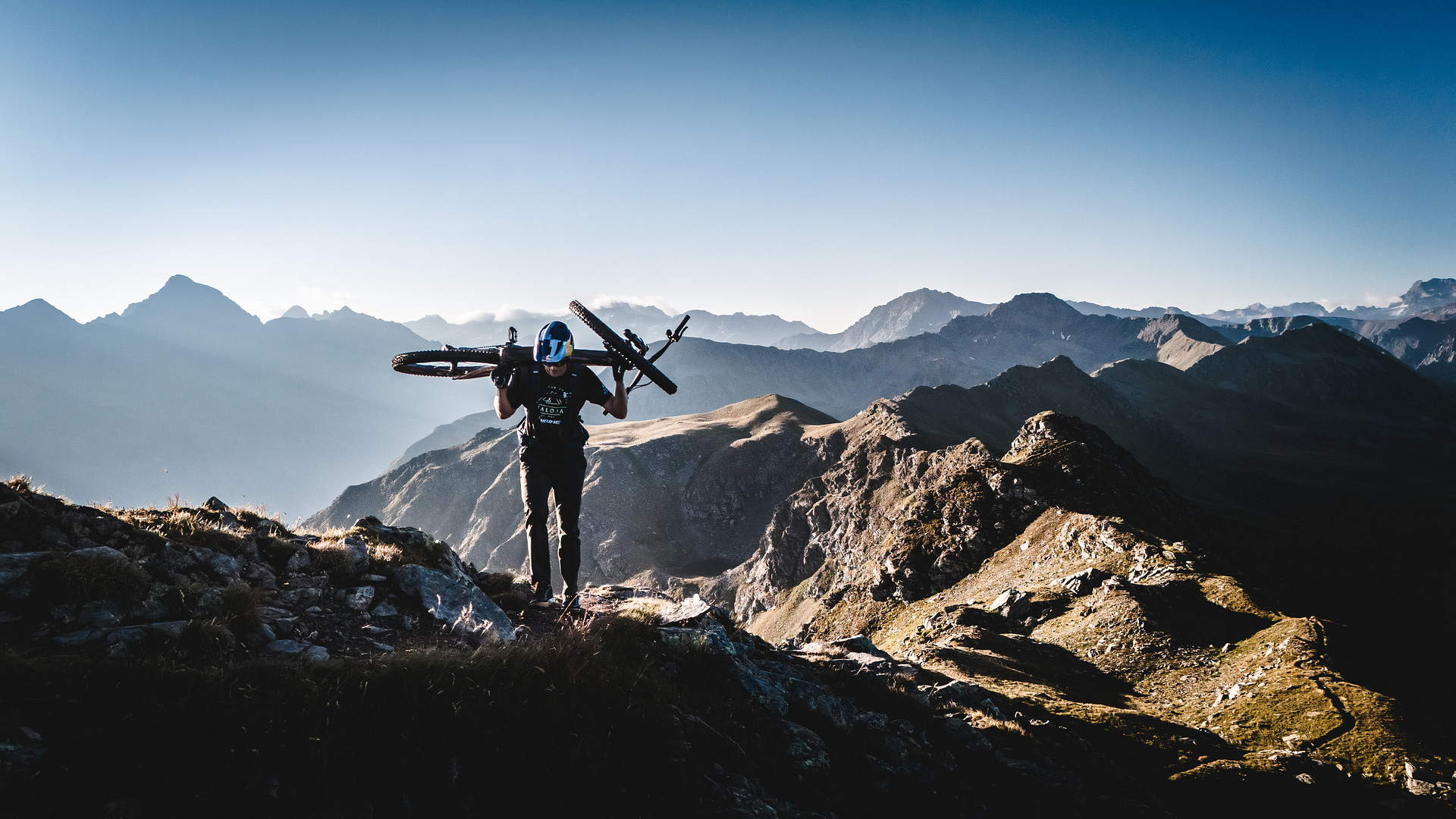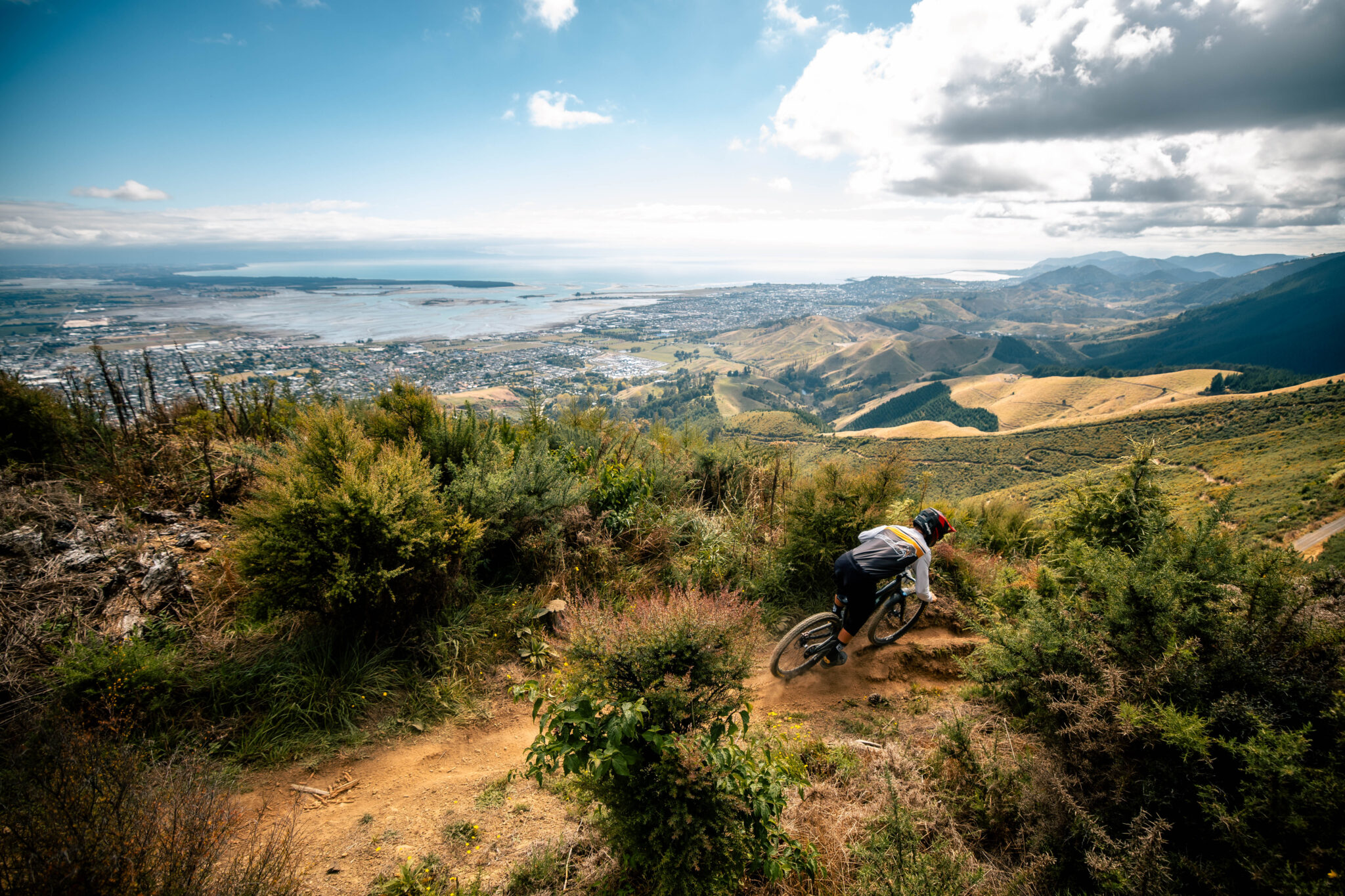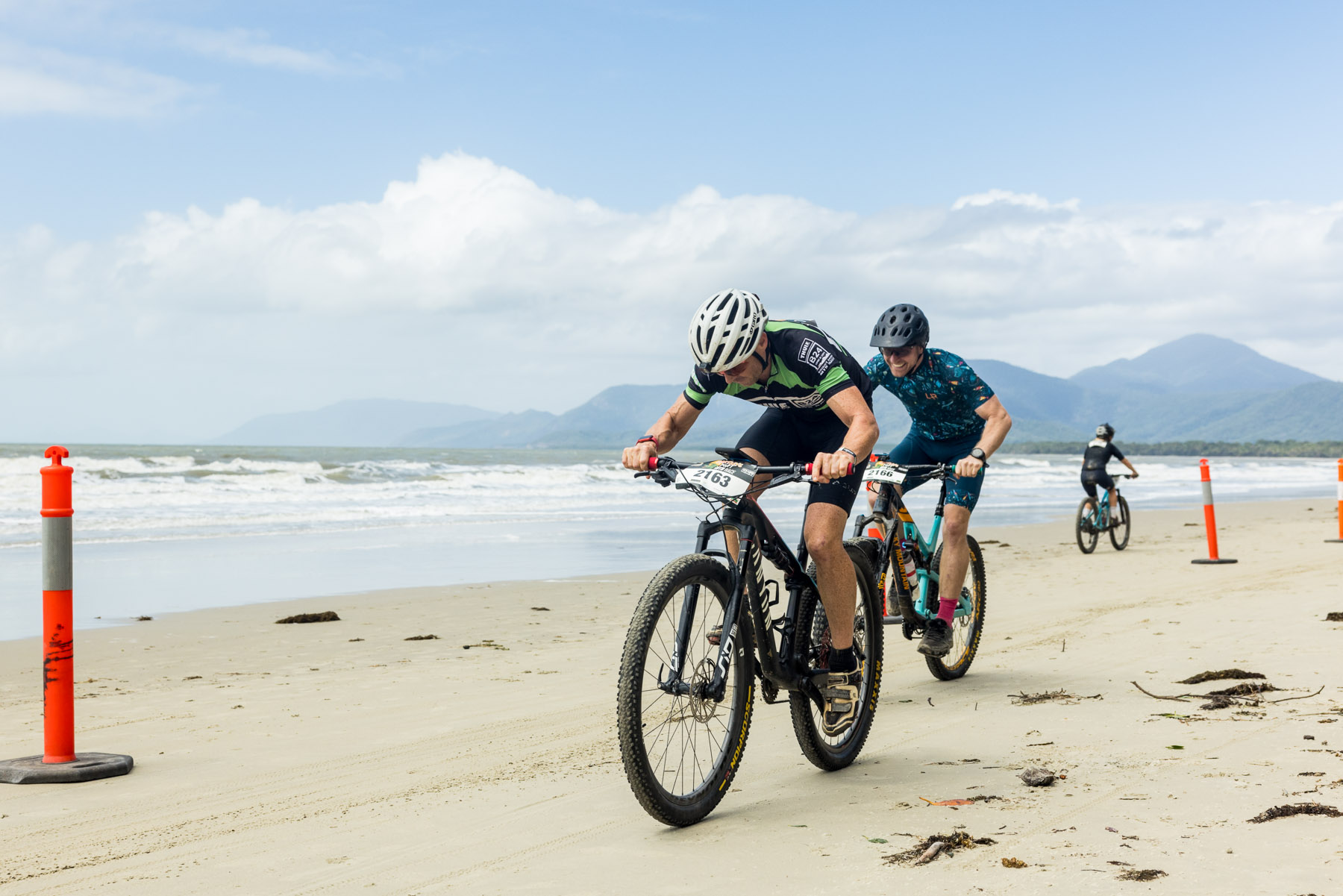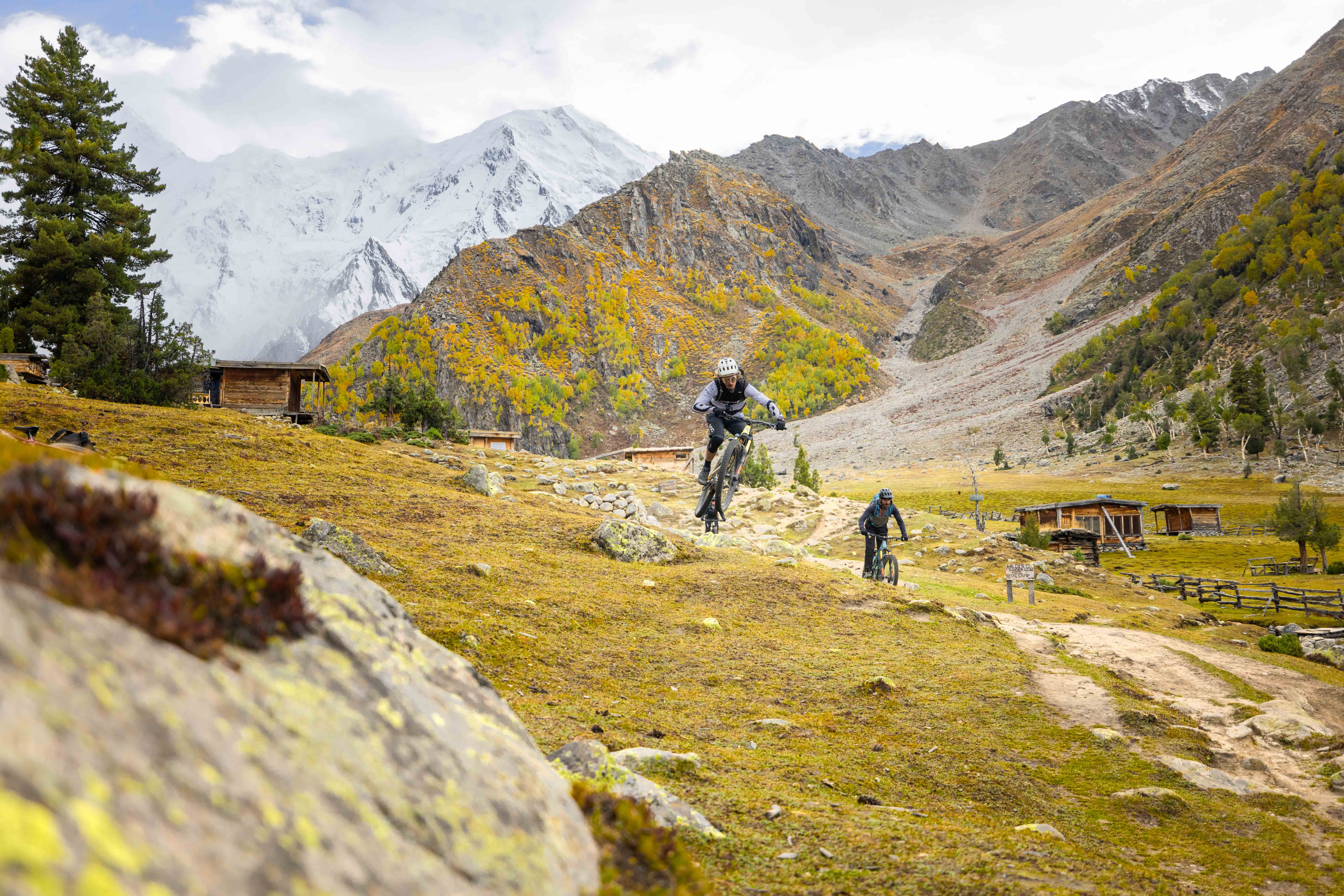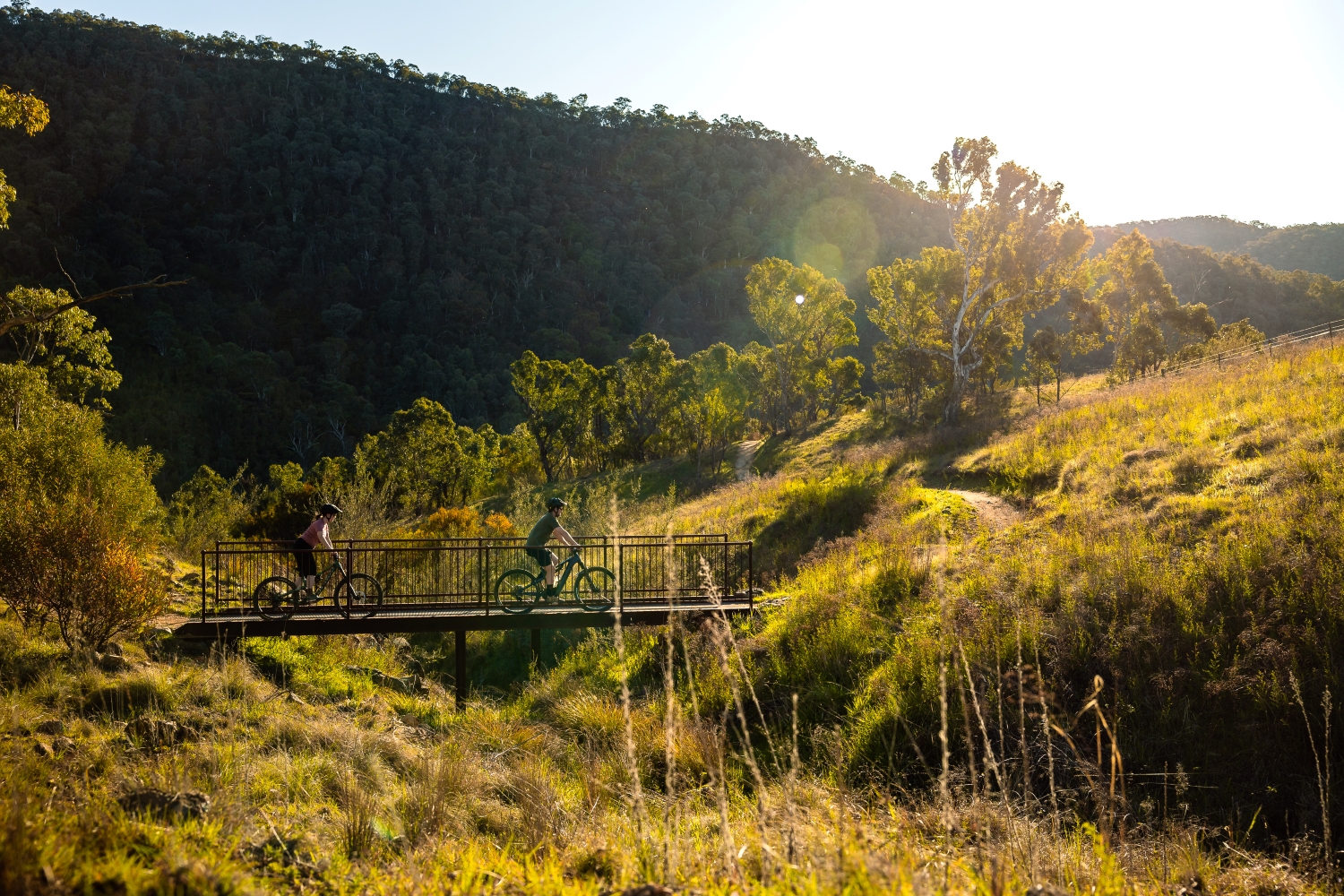Busting Myths in Mountain Biking
Will Shaw busts mountain biking's biggest myths
Words: Will Shaw
Photos: Mike Blewitt, Colin Levitch, Nick Waygood, and Tim Bardsley-Smith
There are all sorts of phrases that are spoken like gospel in mountain bike circles – and we are probably guilty of spreading some of them, like a lot of other mountain bike titles. But what statements are fact, and what ones are myths?
Flat pedals win medals?
Loiter at any trailhead long enough and you’ll hear the phrase ‘flat pedals win medals.’ It’s a catchy saying, but is there any truth to it?
While the majority of professional Enduro and Downhill riders use clipless pedals, flats have some distinct advantages. They allow you to take a foot off instantly, you can move your feet to weight the bike more precisely, and you can drop your heels further for stability and braking traction.
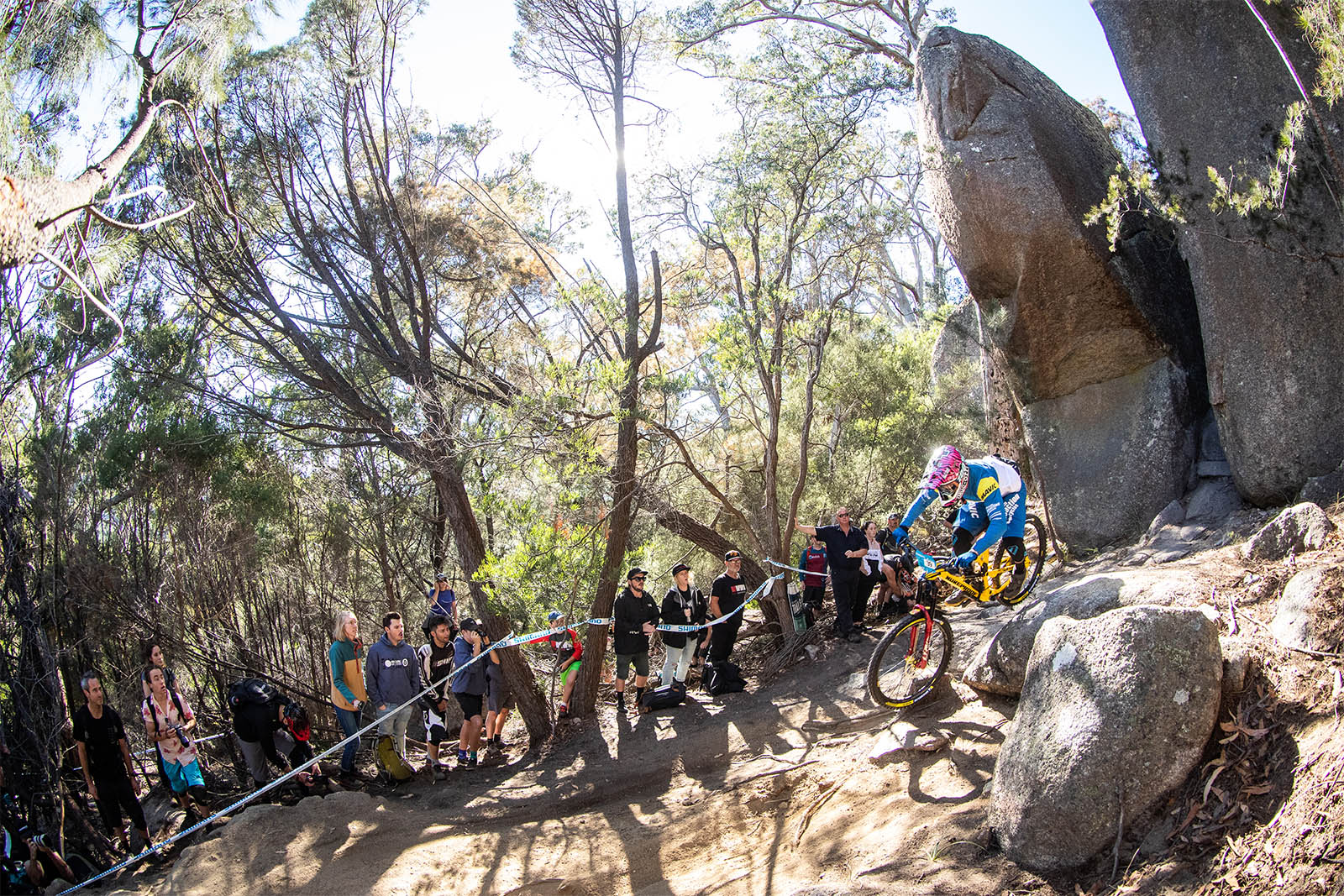
In the last twenty years, no name has been more synonymous with flats than Sam Hill. World Cup Downhill rounds and series wins, three World Championships, and his recent three-peat of the Enduro World Series (EWS) overall demonstrate that flat pedals definitely win medals. Hill’s success is an anomaly however, particularly in the world of Enduro.
In Downhill the humble flat pedal is slightly more popular. Connor Fearon rides flats to regular top tens, Brendan Fairclough had his best season in years on flats in 2019, and who can forget Gee Atherton borrowing a local’s FiveTens to win in Cairns in 2014.
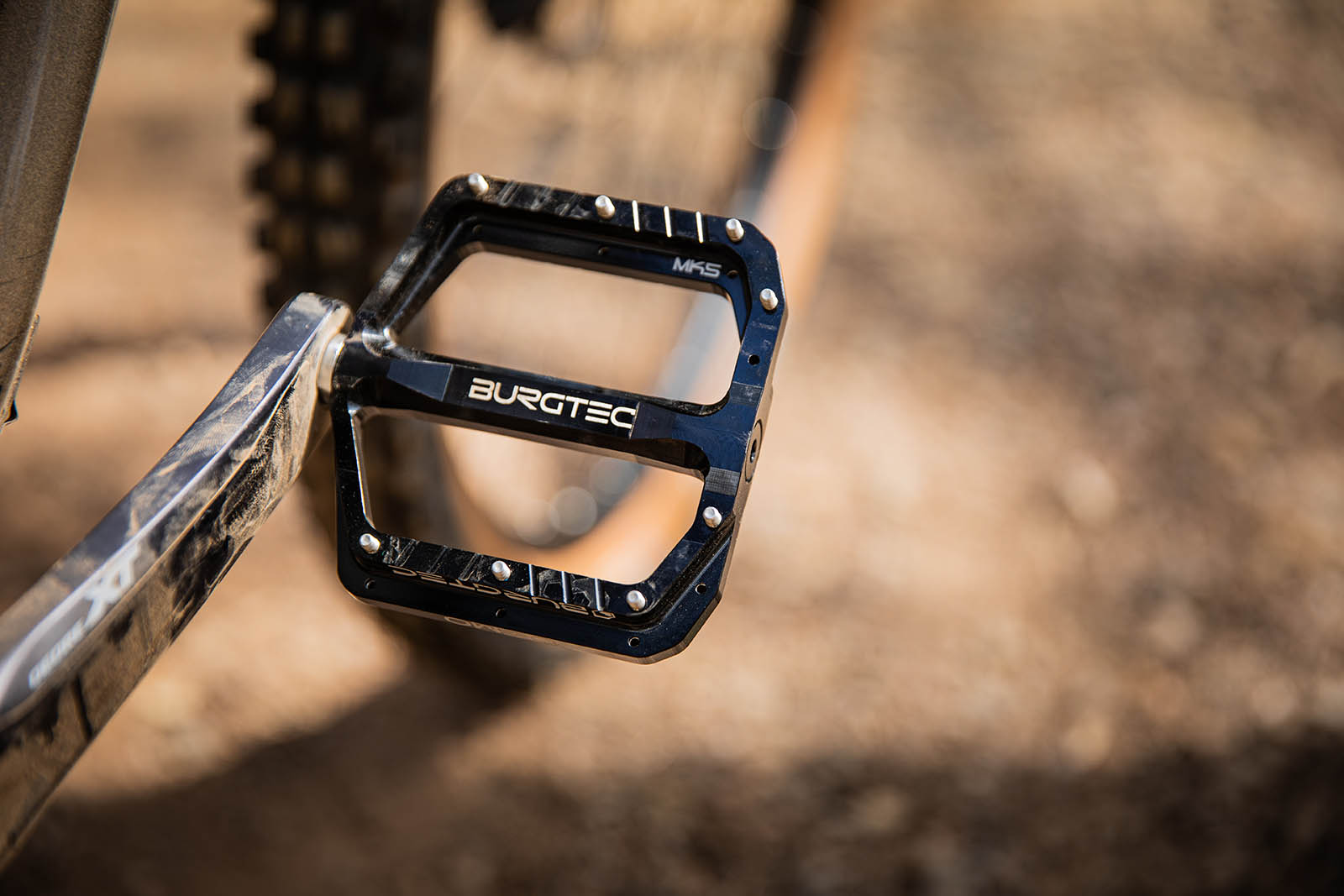
Another flat pedal riding Aussie is Chris Kovarik. His 14 second victory at Fort William in 2002 is one of the biggest winning margins in Downhill World Cup history.
To summarise, flat pedals do win medals, but they’re rarer on the podium than their clipless cousins. Whilst in the post Sam Hill era we might see fewer flats on the podium, they’ll always reign supreme in the world of freeride and dirt jumping.
Factory chain lube, good or bad?
Should the lubricant on new chains be left on or degreased immediately? Proponents say the factory lube keeps the chain’s internals lubricated. Detractors claim the lube’s stickiness attracts dirt, causing premature drivetrain wear.
Lachlan Mackillop from SRAM Technical University says SRAM’s chains are ready out of the box. He says the factory lube keeps the chain’s pins and rollers lubricated, so leaving it on isn’t an issue.

‘Whilst having a dirty chain is detrimental to the drivetrain, the real killer is where debris penetrates deeper inside the chain. Personally, I run the stock lube until the chain is noisy or dirty, then I clean the chain really well and apply a wax-based lube such as Smoove.’
Dave Rome from CyclingTips has dived deeper into chains than just about anybody, and he recommends stripping the chain from the get-go.
‘The lube SRAM uses is incredibly sticky and saps a fair bit of energy, not to mention how dirty it gets. Shimano’s factory lubricant has gotten better recently, but I’ll still degrease their chains for mountain bike use.’
Dave’s recommendation for an efficient drivetrain without too much effort is to apply a wax-based lube.
‘A Smoove or Squirt won’t adhere to the factory grease if it’s applied to a chain that hasn’t been thoroughly degreased. You want to degrease the chain as much as possible prior to applying wax-based lubes.’
Whilst we’ve found that a wax-based lube applied to a stripped chain is often a cleaner and more efficient option, it isn’t the end of the world if you whack a new chain on your bike and go riding. Sometimes you can’t wait to get out there!
You have to have wide rims
This myth is seemingly supported by the industry moving to wider rims every year. Despite this, take a look at a World Cup Downhill or an EWS and you’ll see many riders opting for narrower rims. An example is the ever-popular DT Swiss EX471, which sports a 25mm internal width.
Without retreading old ground, wider rims provide better support for the wider tyres that are now commonplace from XC through to Downhill. A wider rim makes the tyre less balloon shaped and more of a supported profile. This increases lateral tyre support and allows for lower pressures with less risk of pinch flatting or burping.
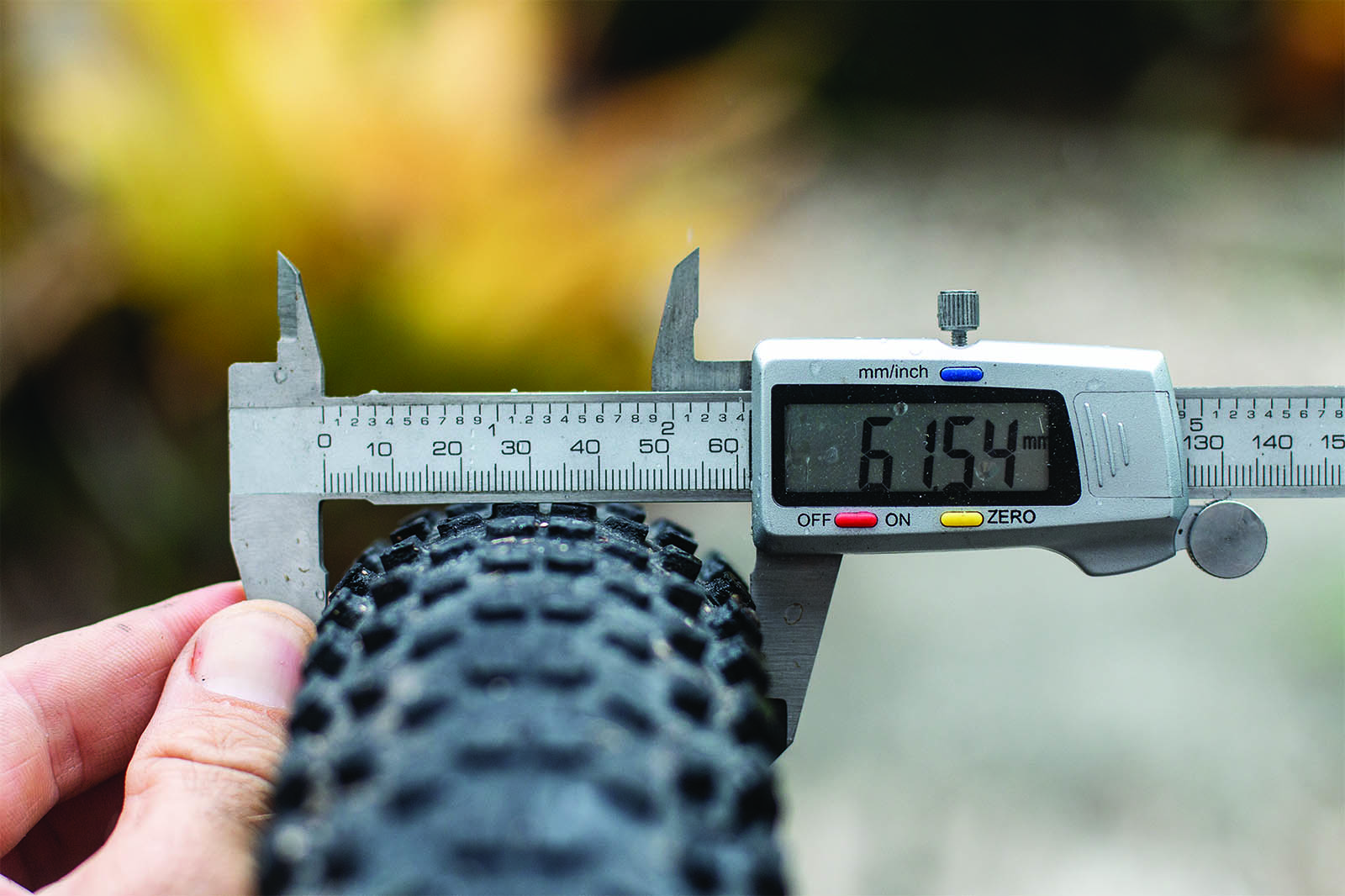
Last year we visited DT Swiss’s headquarters in Switzerland. Andreas Tschanz, one of their rim engineers told us that rim width selection goes hand in hand with tyre selection.
“It’s a combination of rim width and tyre width, so you cannot say what rim width is the best. Too wide and you no longer gain benefits, but it also depends on the tyres.”
So, are wider rims better? It really depends. We’ve found that around a 30mm internal rim width for 2.4” or so tyres is a sweetspot for everything from cross-country to aggressive trail riding. What about when you’re putting on a full-face? We’ve found a slightly narrower internal width (even just on the rear) paired with a sturdier tyre casing can result in less tyre roll as well as less mechanicals like pinch flats and cut tyres.
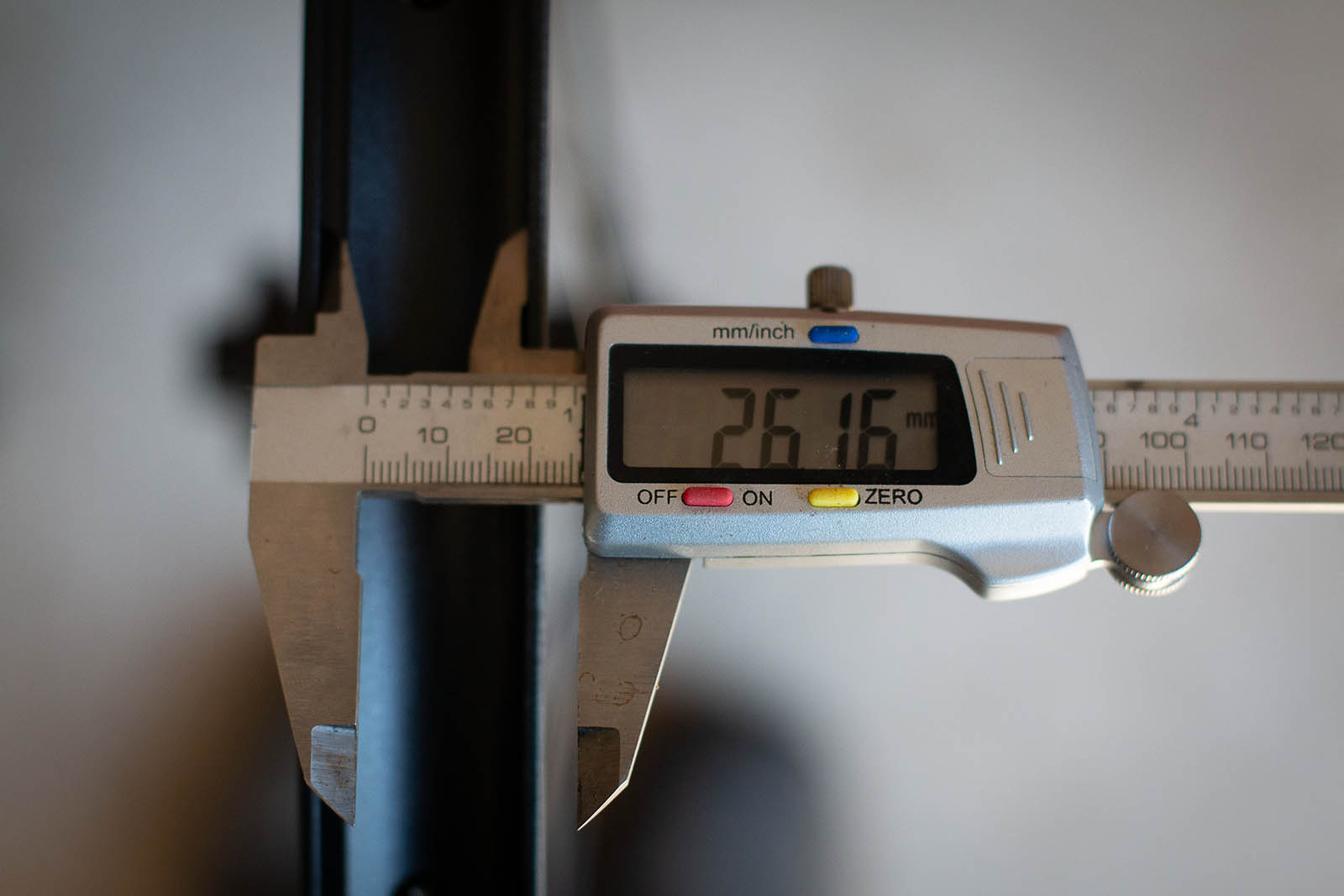
Lower tyre pressures are always better
Going hand in hand with rim widths, the idea that you want lower tyre pressures has gained traction in recent years. Despite the increase in grip, the lower you go, the higher the risk of pinch flatting. The potential for tyre roll and burping is also greater.
We’ve covered this myth in more depth in the past, and we found it’s best to do some experimenting with your setup. Factors such as where you’re riding, your riding style and what type of rim/tyre setup you have all play a role in determining the ideal pressure.

The emergence of tyre inserts has also encouraged riders to drop their pressures. We’ve been dropping our pressures between 2-4psi front and rear when using inserts such as CushCore.
One area where we’ve seen a shift to lower pressures as a result of rim and tyre widths is XC racing. Nino Schurter is now running 2.4” XC tyres mounted on 30mm internal rims and runs his pressures in the late teens. Only a few years ago pressures were closer to 30psi, internal rim widths were around 20mm and tyres hovered around the 2.0” mark!
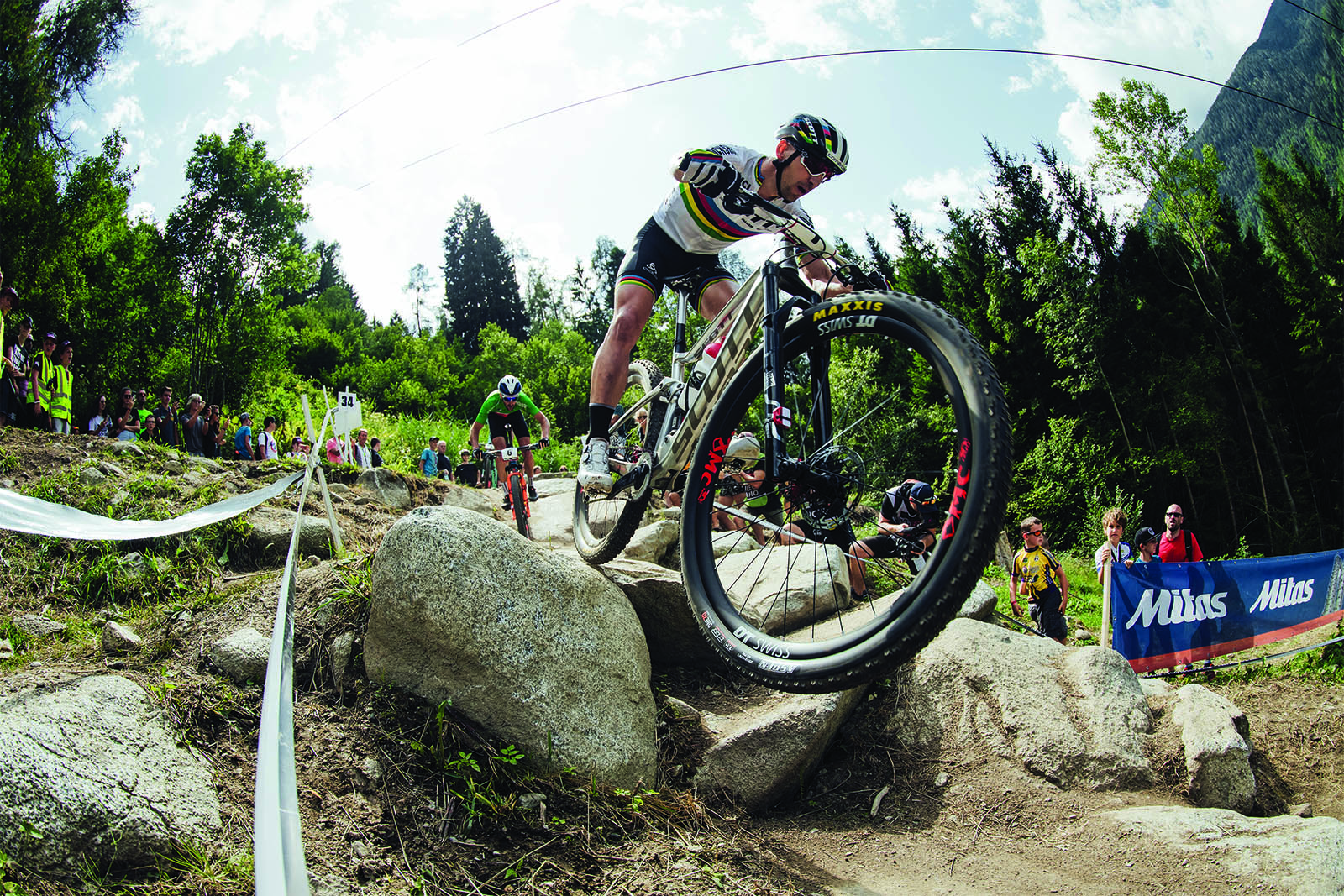
Are lower pressures always better? It really depends. We would recommend dropping your pressures a couple of psi if it’s something you haven’t tried, as the difference in grip and comfort can be staggering. If you’re an aggressive rider who’s flatting regularly, an insert in the rear or a sturdier tyre casing are worth a look if you’re running rock hard pressures to compensate.
Everyone needs progressive geometry
A few years ago, a 450mm reach on a size large was considered long, a head angle of 67-degrees was slack and aggressive, and manufacturers were making the shortest chainstays possible. Fast forward a few years and we don’t bat an eyelid at large bikes with almost 500mm reaches, sub 65-degree head angles and chainstays that were ‘impossible to manual’ a few years ago.
Whilst there’s no doubt the longer, lower and slacker revolution has created more confidence inspiring bikes across the board, does a beginner or singletrack oriented rider really need borderline downhill bike geometry?

We think there’s merit in going for a slightly less aggressive geometry if you’re newer to the sport or riding more mellow singletrack than double black descents.
Take for example the Polygon Siskiu D7 we recently tested. This bike has a 465mm reach in a size large, 67.5-degree headtube angle and 436mm chainstays. Our conclusion was ‘this is a bike suited for getting out and riding trails. Whether that’s local singletrack, a fire trail or a visit to one of Australia’s epic trail locations.’
Compare this to the something like the new Norco Optic, which demands an aggressive riding style to get the most out of its progressive geometry, and we think the newer rider or singletrack focused rider may get more out of a quicker handling and less gravity-oriented bike.
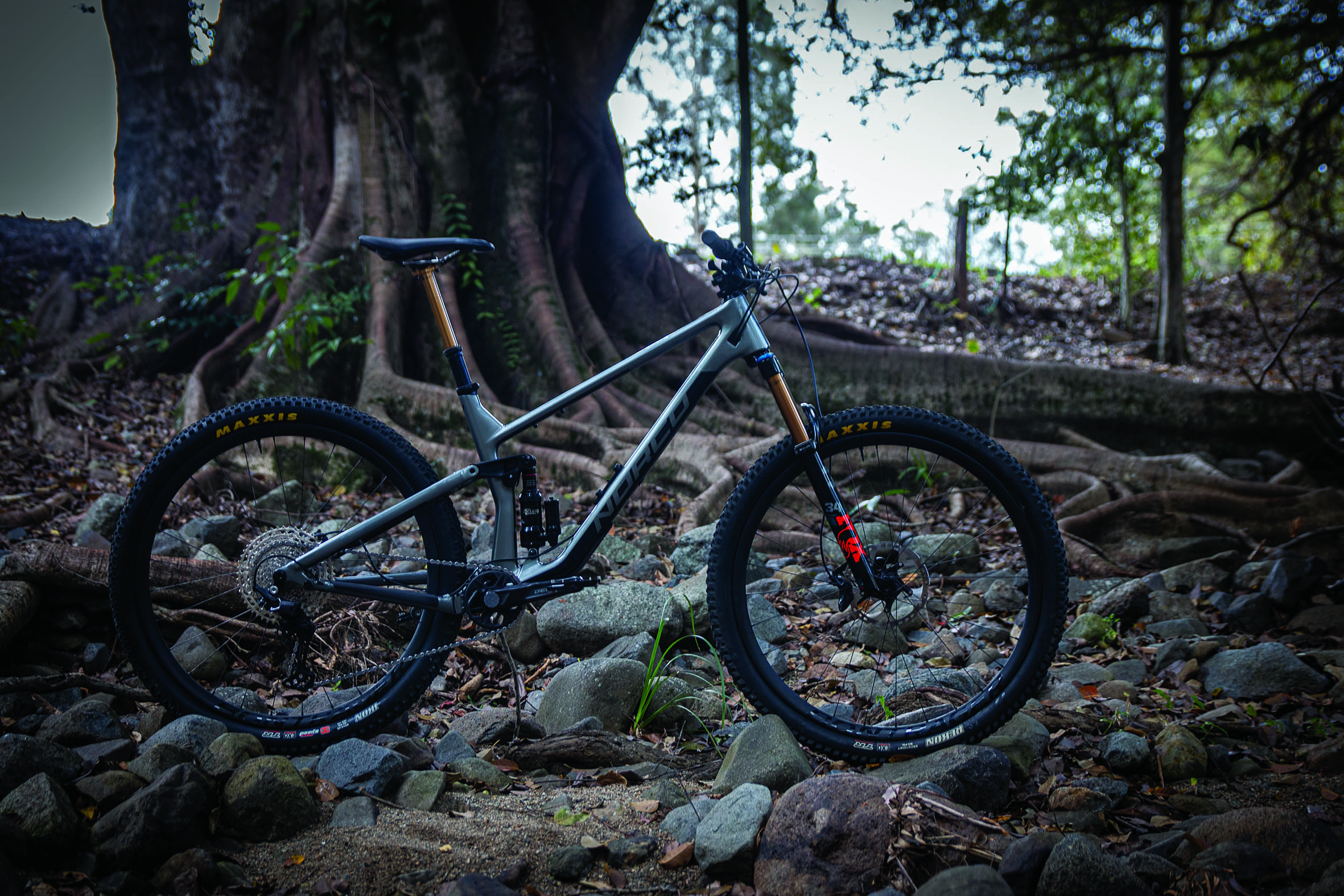
Whilst modern geometry is incredibly capable, it’s worth considering what the majority of your riding is going to be, and whether a more balanced geometry might be a better option.
New technology is mostly just marketing
If all bike industry marketing was true, we’d be drifting through corners like Sam Hill and picking our lines with Nico Vouilloz precision. In reality, the majority of new products are evolutionary, not revolutionary.
Whilst most brands’ flagship products are incredible compared to even 5 years ago, we think the most exciting leaps forward have been made at the entry level. This is the result of technology trickling down to more affordable price points far quicker than in the past.
Take entry level bikes for example. For around $3000, and even closer to $2000 you can get a bike with brand name suspension, a dropper post, a wide range 1x drivetrain, good brakes and modern geometry. Most of the bikes in this range have the little details sorted as well, such as through axles and clever cable routing.
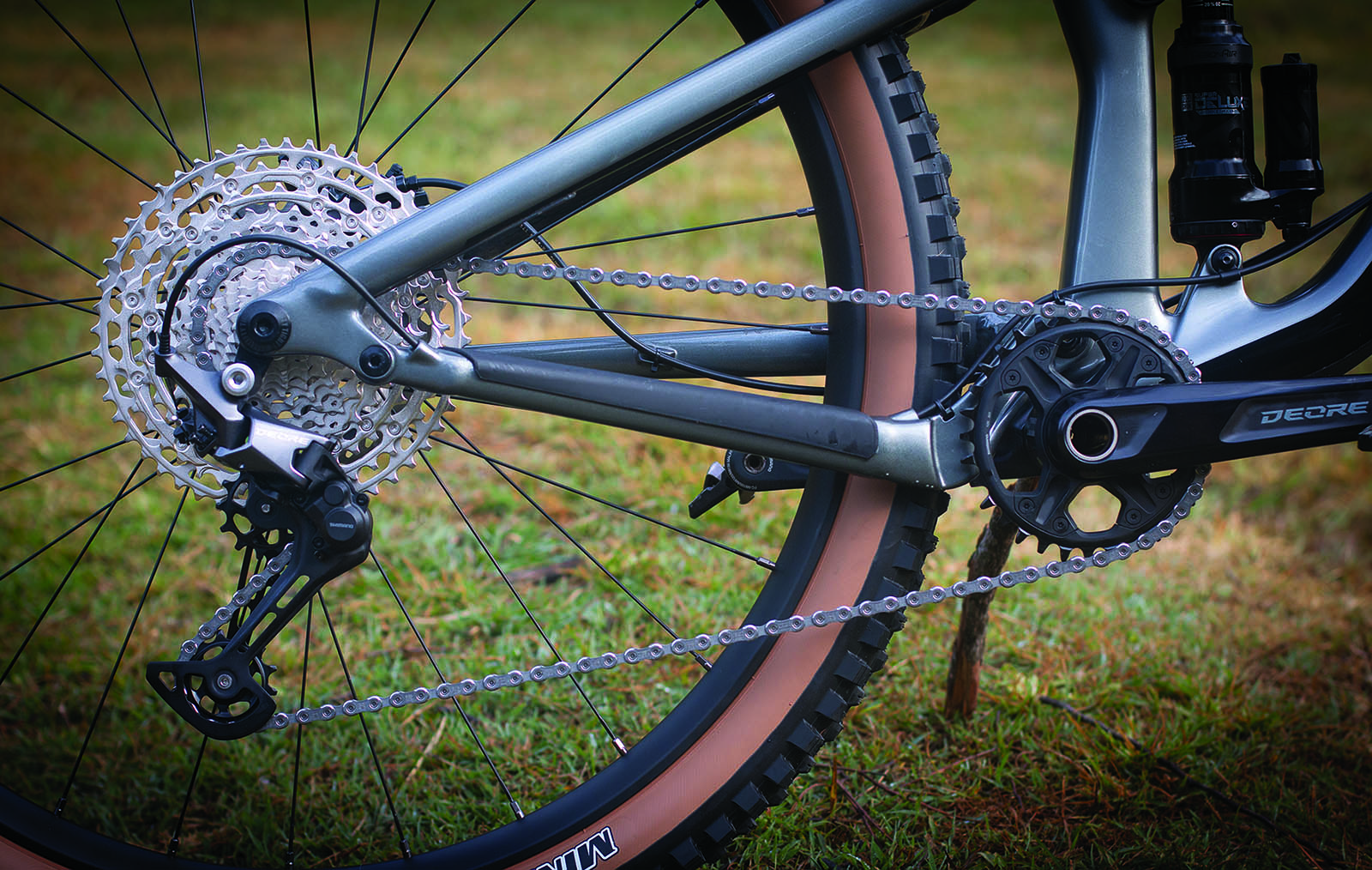
One piece of new tech that’s a game changer is Shimano’s 12 speed Deore groupset. The all-new Deore has a super wide range, Shimano’s legendary durability and compatibility with its higher priced siblings. And the udpates to the 10 and 11-speed versions make an impact down to bikes at just above $1000.
So, is new tech mainly marketing? Sometimes, but the trickle down of product features suggests the entry level is really benefitting from how good products are these days.
You don’t need a skills coach, learn on the trails
When you go skiing, skipping introductory lessons is unheard of. Whilst the world’s best such as Loic Bruni and Adrien Dailly have riding coaches, coaching remains fairly niche in the wider mountain bike world.
Dylan Cooper is an ex-international level rider, who owns coaching company Ride Technics. Whilst he’s seen an increase in riders of all levels receiving coaching, he says mountain bike coaching isn’t as common compared to most sports.
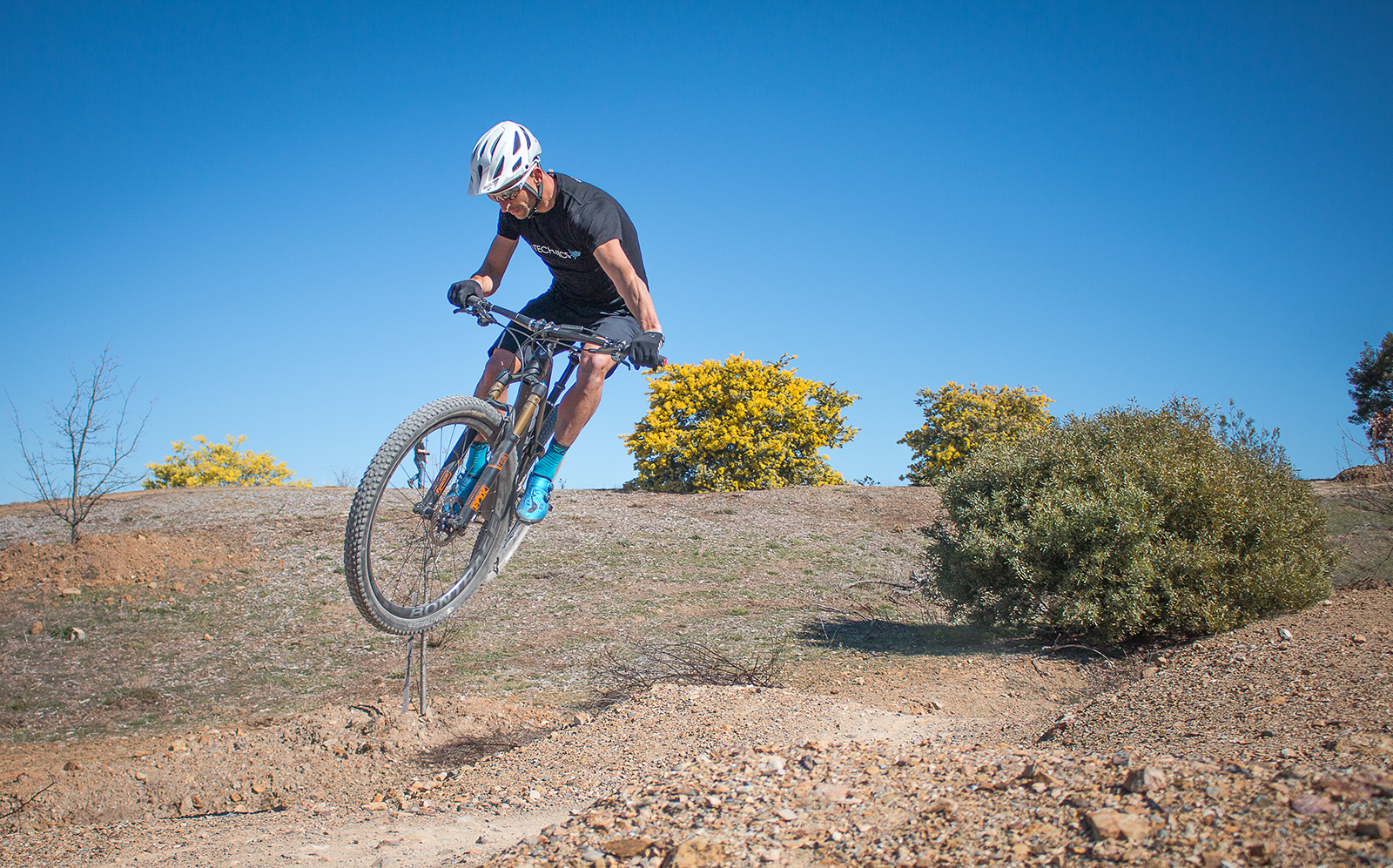
‘With Ride Technics I initially focused on elite riders, people I raced with and people “in the scene”. As time has passed mountain biking has become more recreational, and people realise they can gain more control and enjoyment with some instruction. In a couple of hours, you begin to form good habits that benefit you for your riding career.’
Cooper believes the capability of modern bikes can mask poor habits. This means riders ride above their ability until something catches them out, which can end badly.
‘Mountain biking is more dangerous than sports like tennis or golf, you have the potential to fall off at high speed and from high off the ground. We do drills and video analysis to show riders where their technique can be improved, which makes a real difference.’
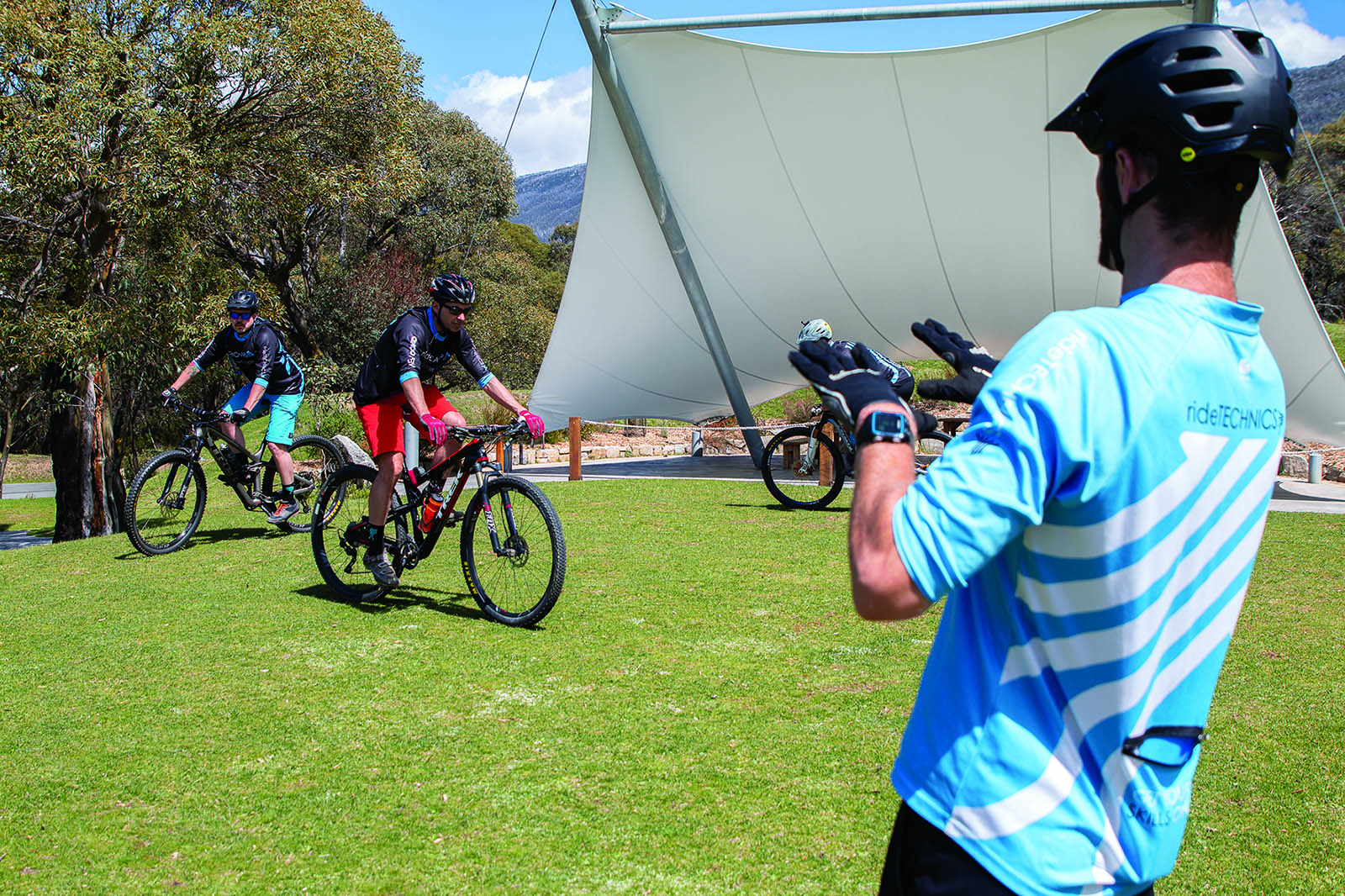
Basic equipment setup has a huge impact on rider safety and enjoyment. Cooper says tyre and suspension setup is often lacking, and explaining the basics makes a massive difference.
‘We look at people’s suspension and tyre pressures when they commence. They’re often running tyre and suspension pressures that are too high, too low or unbalanced.’
We can definitively bust this one. If the best riders in the world can benefit from coaching, you can too!
Be sure heck out our skills page to brush up on your basics and get rid of bad habits
